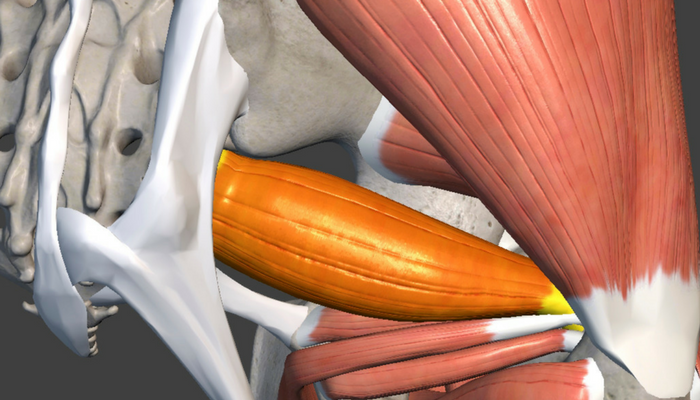Photo: 3D Atlas of Anatomy
Catfish Animation Studio
The largest of the deep hip rotators, the piriformis can be responsible for the common ailment of pseudo-sciatica or piriformis syndrome.It is important to note the difference between pseudo-sciatica and true sciatica.
What is Sciatica?
True sciatica involves the compression of the sciatic nerve due to a slipped or herniated disc.This is more of a structural problem that requires the attention of either a chiropractor or surgeon depending on the severity.
What is Pseudo-Sciatica
Pseudo-sciatica or piriformis syndrome has the same symptoms but is caused by an impingement on the sciatic nerve due to binding or tightness in the soft tissue that can be released through massage techniques and/or stretching.While the symptoms and severity may vary, pseudo-sciatica usually involves pain, tingling or numbness in the buttocks and can include shooting sharp pains down the leg as far down as the knee or the ankle.

How Can I Alleviate Piriformis Pain?
One of the things you can do to alleviate and avoid this condition is regularly stretching this muscle with the following techniques shown in the infographic below:
Tennis Balls Aren’t Just For Tennis
Additionally, you can self-care the piriformis by rolling and massaging the muscle with a tennis ball. After stretching the piriformis muscle take a tennis ball, place it under your piriformis and lay on it. This will work out a trigger point, or a knot within the muscle. Lay on the ball for 30 seconds. Relax for one minute. Repeat the process four to five times.
While we encourage self-care as much as a dentist encourages brushing one’s teeth, these techniques are not designed to replace professional massage maintenance any more than regular brushing and flossing can replace regular dental checkups.





